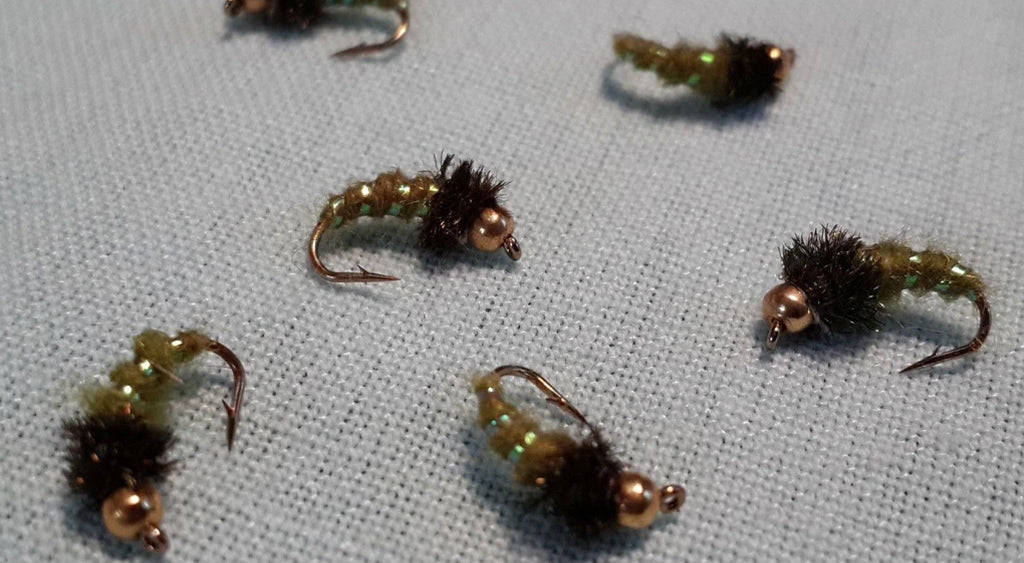
Matching the hatch: the lifecycle of the caddisfly
Caddisflies go by many names. They're known as caddises, sedges, sedge flies, rail flies, rock worms, caseworms and probably some other names too. No matter what you call them, caddis flies are common insects that spend most of their lives in and around water. They're important to trout and other fish. So they're also important for anglers who want to catch those fish.
The caddis starts its life as an egg that is laid in the water. The egg hatches into a larva or worm. Caddis larva often build protective cases around their bodies using things like small rocks and wood. That's where the "caseworm" name comes from. After some time feeding and growing under water, the caddis larva transforms into a caddis pupa. That pupa then swims to the surface where it hatches into an adult caddisfly. The adults breed and lay eggs back into the water. Then the cycle starts all over again.
Caddis worms are common in a lot of waterways around the world. Fish like trout feed on them regularly. The pupae and adults are especially vulnerable as they go through the hatching process at the water surface. So they get a lot of attention. But plenty of caddis worms end up in the stomachs of fish too. Fish feed on caddisflies throughout their life cycle. As anglers we can "match the hatch" and fish with replicas of caddisflies in all of their shapes and sizes. We sell a number of flies and soft plastic lures here at Angler's Emporium that replicate caddises in their immature, intermediate and adult forms.
Fishing a caddis hatch
If you come across a caddis hatch and see fish rising to eat the adult caddisflies, you will typically want to fish a caddis fly on the surface. The Elk Wing Caddis is probably the most common adult caddis imitation, and it definitely works. There are also other patterns like the Neversink Caddis which is partly made of foam.

If you're fishing fast waters with hungry fish you can usually have success simply by fishing a caddis pattern of some sort. If the water is slow, clear and inhabited by fish that have seen a lot of angling pressure you may need to match the size and color of the caddis that are hatching.
If you're fly fishing, you'll want to use floating fly line that matches your rod. Then, just apply some floatant like Gink and cast out the feeding fish. If you're using spinning tackle, you can simply attach a clear casting bubble like the A-Just-A-Bubble a few feet above your fly to give you some casting weight. For more on that, read our guide to fly fishing with spinning gear.
Nymph fishing with caddis imitations
Caddis hatches aren't uncommon, but you aren't going to see them every time you go fishing. That doesn't mean you should ignore the caddises though. Don't forget that there are lots of caddis larvae living in the water. You can catch a lot of trout by fishing replicas of caddis larva and pupa too. It works throughout the year.
There are a lot of flies that imitate caddis larvae. One of the most accurate is the Olive Caddis Larva. There is also a Bead Head Olive Caddis Larva fly available. The simple but incredibly effective Green Weenie and its bead head variant can also fool trout looking for caddis worms under the water. The same could be said for the chartreuse Epoxy Nymph we carry. There are also caddis pupa patterns that are especially useful when fish lock onto the pupa as they emerge to the water surface.
When it comes to soft plastics the options for replicas are a lot more limited. But they are no less effective. We carry a soft plastic Soft Caddis Pupae that replicates immature aquatic forms of the caddisflies very well. These little lures are just 1.2" and they come in a wide variety of colors. As you might guess, "caddis green" is an exact match for many real caddis larvae. That probably explains why they work so well.
Whether you are fly fishing, spin fishing or using a tenkara rod, remember to match the imitation you are using with its role in the caddis life cycle. Adult caddisflies are usually found near the water surface, so float your dry flies on top. Caddis larvae and pupae are found under the surface, so fish them there. This is a big part of matching the hatch. With this guide and the products we carry, we are here to help you do exactly that.
